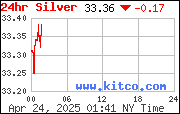Certain things will never change, nuclear accident or not.
From Jiji Tsushin (6/21/2012):
警報出ればすぐ公表=大飯原発、遅れ批判で-保安院
Responding to the criticism in delay in announcement regarding Ooi Nuke Plant, NISA says if an alarm sounds it will be promptly announced
再稼働の準備が進む関西電力大飯原発3号機(福井県おおい町)で、発電機冷却系の警報の公表が遅れた問題で、経済産業省原子力安全・保安院は21日、「予期されていない警報などが出た場合は、安全への影響にかかわらず速やかに公表する」とのルールを決めた。
About the delay in announcing the alarm at the generator cooling system of Reactor 3 at Kepco's Ooi Nuclear Power Plant which is being prepared for the restart, the Nuclear and Industrial Safety Agency under METI decided on a new rule on June 21 that "if an unexpected alarm sounds, it will be promptly announced regardless of the effect on safety".
大飯原発では19日午後9時50分ごろ、発電機冷却系のタンク水位低下を示す警報が鳴ったが、関電は安全上の影響はないとして、保安院の了解を得た上で10時間以上たった翌20日朝に公表した。
At Ooi Nuclear Power Plant, an alarm sounded at about 9:50PM on June 19 indicating the water level decreased in the tank of the generator cooling system. KEPCO decided that there was no effect on safety, and obtaining the consent from the NISA to do so announced the event in the morning of June 20, more than 10 hours after the event.
There was also a leak at the pump in the cooling system at Reactor 3 on June 19, and KEPCO also waited until June 20 to announce. According to Sankei Shinbun (6/21/2012):
関西電力は20日、大飯原子力発電所3号機(おおい町)で、発電機を冷やす水をタンクから送り出すポンプの一部から、わずかに水漏れしていたと発表した。前日19日夜のタンクの水位低下には影響なく、環境への影響はなかった。
KEPCO announced on June 20 that there was a slight leak of water from the part of the pump that transfers water from the generator cooling system tank. [According to KEPCO,] the leak had no effect on the water level decrease in the tank on the night of June 19, and there was no effect on the environment.
関電によると、19日午後10時ごろ、水位低下が見つかった同3号機の発電機の冷却水タンク周辺を調べている際、現場作業員が微量の水漏れを発見したとしている。
According to KEPCO, a worker was inspecting the area around the generator cooling system tank of Reactor 3 at about 10PM on June 19, when he noticed a minute amount of leak.
水漏れは、ポンプの部品を通った水に含まれる不純物を除去するチューブ部分。
The water leak was from the tube that removes foreign matters in the water running through the pump.
関電は、チューブ接続部のボルトを締め、交換も検討している。
KEPCO has tighten the bolt at the connection of the tube, and is considering replacing it.
According to KEPCO's press release, the leak was 0.02cc/second. The press release has a PDF file with a diagram of the system, but it is hard for me to figure out what is what. The location of the leak is not immediately clear, and there is no photograph of the actual leak. It looks KEPCO needs to learn a little bit from TEPCO when it comes to communicating with the outside world. TEPCO's communication skills have improved over the past year under the unfortunate circumstance.
(I don't want to be too familiar with a pressurized water reactor. I don't want to do a self-inflicted crash course on one, like I did on the boiling water reactors in Fukushima as they blew up. Don't start Ooi Nuke Plant. I don't have time to learn a new reactor type. I don't want to even learn about a turbine generator. Don't do it. Learning a little about Mitsubishi's steam generators is already too much...)





 Tokyo Time
Tokyo Time
![[Most Recent Quotes from www.kitco.com]](http://www.kitconet.com/charts/metals/gold/t24_au_en_usoz_2.gif)

